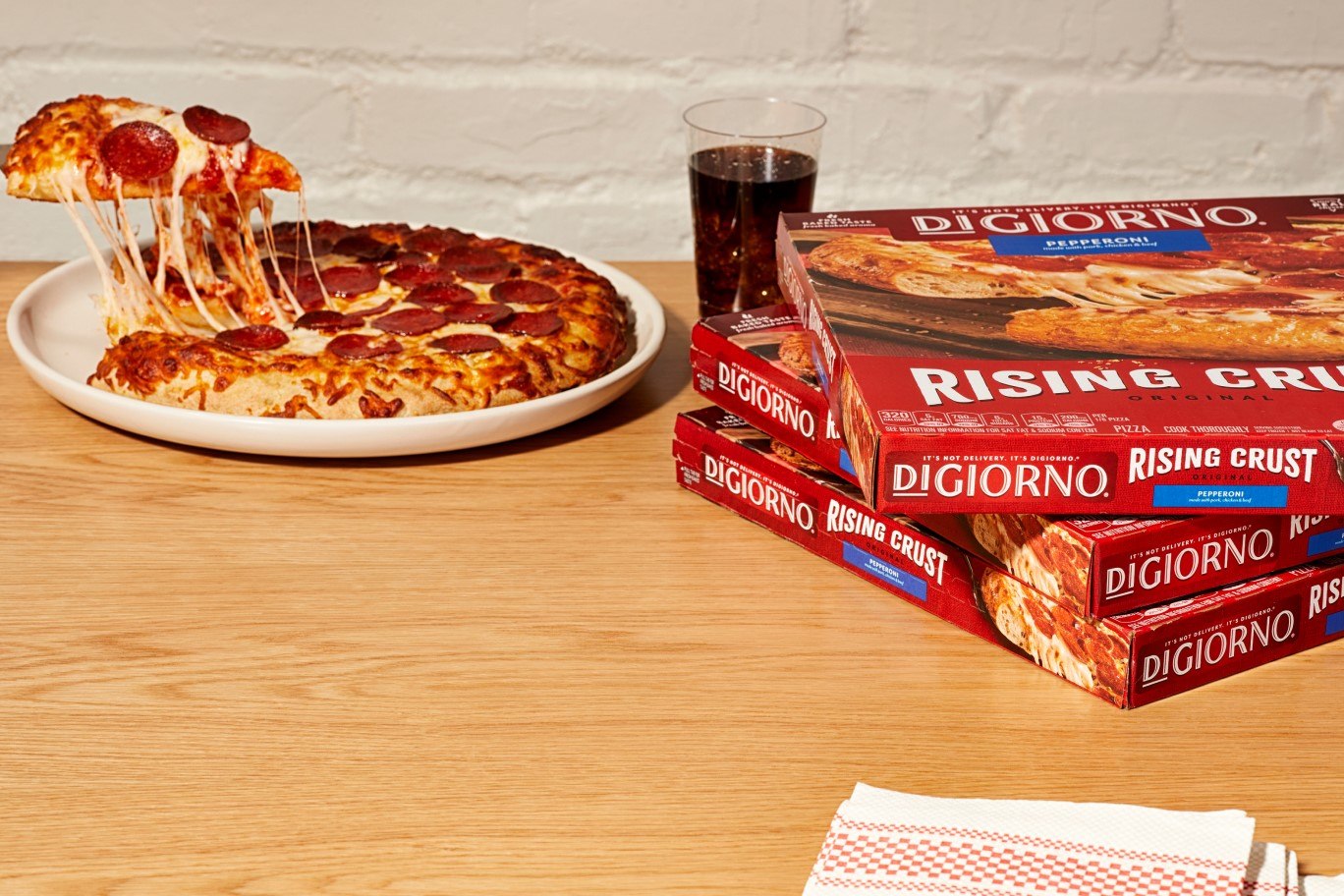
Ever wondered what makes DiGiorno pizza stand out in the freezer aisle, beckoning you with promises of a quick, tasty meal that rivals delivery? Well, you're not alone! DiGiorno has become a household name, but what's really under that deliciously cheesy surface? Nutrition facts about DiGiorno pizza might just surprise you. From calorie counts to sodium levels, understanding what you're biting into can make all the difference in enjoying your meal guilt-free. So, grab a slice (figuratively speaking, for now) as we dive into the world of DiGiorno. You'll discover not only what ingredients make it a go-to comfort food but also how it stacks up nutritionally. Ready to get the lowdown on your favorite freezer pizza? Let's get into it!
Key Takeaways:
- DiGiorno pizza packs a punch with high fat, sodium, and calories. Opt for thin crust and veggie toppings for a healthier slice.
- Enjoy DiGiorno pizza in moderation and balance it with healthier options like salad and water to make it a guilt-free treat.
What's in a Slice? DiGiorno Pizza Nutrition Unpacked
When hunger strikes and convenience is key, many reach for a box of DiGiorno pizza. Known for its "It's not delivery, it's DiGiorno" slogan, this popular frozen pizza brand offers a variety of flavors and styles. But what exactly are you consuming with each slice? Let's break down the nutrition facts.
-
Calories: A typical slice of DiGiorno pizza, from a large pie, contains about 290 to 340 calories. The exact number depends on the specific variety and toppings.
-
Fat Content: Expect to consume around 11 to 16 grams of fat per slice, with 5 to 7 grams being saturated fat. This accounts for a significant portion of the recommended daily intake.
-
Sodium Levels: DiGiorno pizzas are high in sodium, with a single slice providing approximately 700 to 800 milligrams. That's about a third of the maximum recommended daily intake for adults.
-
Carbohydrates: Each slice delivers about 34 to 38 grams of carbohydrates, which includes 2 to 3 grams of dietary fiber and 3 to 5 grams of sugars.
-
Protein: Good news for protein seekers – one slice offers between 14 to 16 grams, making it a filling option.
The Cheese Factor
Cheese is a key component of pizza, contributing to both its flavor and nutritional profile.
-
Calcium: Thanks to the cheese, a slice of DiGiorno pizza provides about 15% to 20% of the daily recommended calcium intake.
-
Cholesterol: Cheese also adds cholesterol to the mix, with each slice containing around 30 to 40 milligrams.
Considering the Crust
The crust type significantly affects the nutritional content of your pizza.
-
Thin Crust: Opting for a thin crust reduces calorie and fat intake. A slice from a thin-crust pizza has roughly 20% fewer calories and fat compared to its traditional counterpart.
-
Stuffed Crust: On the flip side, stuffed crust versions pack more calories and fat, thanks to the extra cheese baked into the crust.
Toppings Talk
Toppings can make or break the nutritional value of your pizza.
-
Vegetable Toppings: Adding veggies like peppers, onions, or mushrooms increases dietary fiber and vitamins without significantly boosting calorie content.
-
Meat Toppings: Meat toppings, especially pepperoni and sausage, add more protein but also increase fat, calories, and sodium.
Special Varieties
DiGiorno offers several special varieties catering to different dietary preferences.
-
Gluten-Free: For those avoiding gluten, DiGiorno's gluten-free pizzas provide a safer option without sacrificing taste.
-
High Protein: The "Power Pizza" series is designed with a focus on higher protein content, appealing to fitness enthusiasts.
What About the Sauce?
The sauce is more than just a tasty addition; it contributes to the pizza's nutritional value.
-
Lycopene: Tomato sauce is a good source of lycopene, an antioxidant linked to heart health benefits.
-
Sodium: However, pizza sauce also adds to the overall sodium content of the pizza.
Making Healthier Choices
While DiGiorno pizza is a convenient and tasty option, there are ways to enjoy it more healthily.
-
Portion Control: Limiting yourself to one or two slices can help manage calorie and sodium intake.
-
Salad on the Side: Pairing pizza with a side salad boosts fiber and nutrient intake, making for a more balanced meal.
-
Water is Best: Choosing water or a low-calorie beverage over sugary drinks can significantly reduce overall calorie consumption.
The Bottom Line
-
DiGiorno pizza, like any other processed food, should be enjoyed in moderation as part of a balanced diet. Being mindful of portion sizes and pairing it with healthier options can mitigate some of its less desirable nutritional aspects.
-
Ultimately, understanding these nutrition facts allows for informed choices, ensuring that your love for pizza can continue without compromising health goals.
Piecing Together DiGiorno's Nutritional Puzzle
Alright, we've sifted through the cheesy layers and pepperoni-packed facts, giving you the lowdown on what makes DiGiorno pizza tick, nutrition-wise. From calorie counts to sodium levels, we've covered the essentials to help you make informed choices. Remember, while DiGiorno offers that tempting taste of delivery without the wait, keeping an eye on portion sizes and nutritional content is key to enjoying it as part of a balanced diet. So next time you're about to preheat the oven for that crispy, golden crust, think about how it fits into your nutritional goals. DiGiorno can be a convenient and tasty option, but like all good things, moderation is the secret ingredient.
Frequently Asked Questions
Was this page helpful?
Our commitment to delivering trustworthy and engaging content is at the heart of what we do. Each fact on our site is contributed by real users like you, bringing a wealth of diverse insights and information. To ensure the highest standards of accuracy and reliability, our dedicated editors meticulously review each submission. This process guarantees that the facts we share are not only fascinating but also credible. Trust in our commitment to quality and authenticity as you explore and learn with us.


